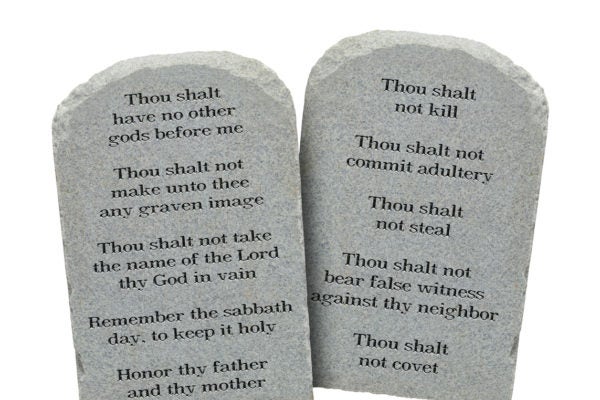In 2005, the U.S. Supreme Court narrowly approved the constitutionality of the Ten Commandments monument that has resided on the grounds of the state Capitol since 1961. Now, Texas House Bill 307 would allow the Ten Commandments to be displayed in classrooms in public schools by preventing school boards from banning the displays.
If we’re going to have yet another debate about the issue, the proponents of these displays should develop a new argument.
Supreme Court Justice Stephen Breyer voted with the majority in the Texas case but on the same day voted against displays of the Ten Commandments in Kentucky. He argued that, even though the Texas monument had a religious message, it had been put to a secular use for over 40 years. The Kentucky displays were new with no history of secular use. New displays in Texas classrooms are going to face the same obstacle.
Here’s what the bill’s proponents should argue: What we call the Ten Commandments — our own version and understanding of them — has evolved to the point that it is no longer the same as the Ten Commandments of the Bible.
How so? First, if we take the Bible just as it is, without splitting up its texts or rearranging them in a different order as some scholars do (including me, at times), we find three versions of the Ten Commandments. The two best known are in Exodus 20 and Deuteronomy 5. They are not identical but contain the famous rules we normally associate with the Ten Commandments.
The third comes in Exodus 34 with rules like these: “you shall keep the feast of unleavened bread,” “you shall redeem every firstborn son,” and “you shall not boil a goat in its mother’s milk.” Interestingly enough, this list of rules is specifically designated as “the Ten Commandments” (in verse 28), whereas the other two lists are not.
So, which list counts as the Ten Commandments? “We” — the readers of the Bible — are the ones who have decided this. Almost every plaque or monument that you see follows (never quite exactly) the list in Exodus 20, but this is a decision that we made. What we call the Ten Commandments is our own distillation of these biblical passages. We decided to ignore the list in Exodus 34, follow the list in Exodus 20, and even abbreviate the wording of some rules.
Second, the Ten Commandments of the Bible show up in the middle of a story. This is true for all three versions. That story is about the creation of a pact between God and the ancient Israelites. The commandments are part of the terms of the pact and were meant to reinforce the Israelites’ exclusive devotion to God. They were not meant for everyone. When we display them today, we’re saying that they are for everyone. We’re giving them a purpose very different from their original intent.
Finally, we’ve given a new meaning to the individual rules — a meaning they didn’t originally have. The first few rules are very religious in nature and speak strongly against religious liberty.
But they have come to symbolize the respect and value that we as a nation accord to religion in general. “Honor your father and mother” initially meant that an adult male should physically care for his elderly parents. “You shall not commit adultery” meant for men not to sleep with another man’s wife. For a married man to sleep with female slaves, prostitutes, or unbetrothed women didn’t count as adultery. This is not how we think of these rules today.
What we now call the Ten Commandments is ultimately a creation of our own making. In fact, you can argue that it is mostly an American creation. Yes, our version was inspired by the biblical version(s), but it has lived in the American consciousness long enough that it has taken on a life of its own. We have infused the rules with new meaning and put our own uniquely American stamp on their purpose. What we call the Ten Commandments is not so much a religious product as an American one.
If they use this argument, the proponents of HB 307 might have a chance with Justice Breyer and others who share his perspective.
Bruce Wells is an associate professor of Middle Eastern studies at The University of Texas at Austin.
A version of this op-ed appeared in the Dallas Morning News, Waco Tribune Herald and the San Antonio Express News.




